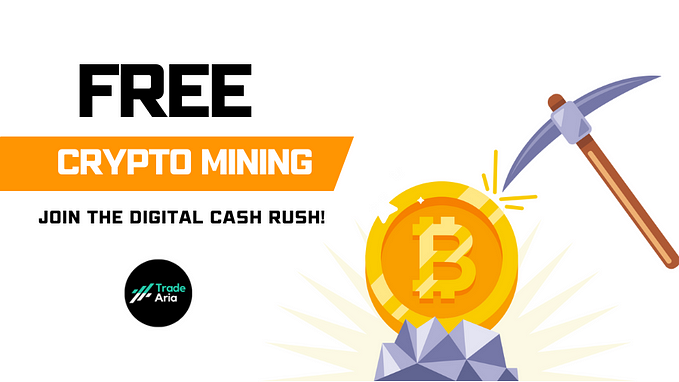Centrifuge Protocol: making NFTs available on the DeFi market
Centrifuge is an open blockchain PoS protocol built on the Substrate that focuses on real-world assets and converts them into NFTs (non-fungible tokens).

How does Centrifuge work?
Centrifuge solves the problem that arises for companies having a liquidity problem (simply put — the ability to convert corporate assets into money). There are many companies that, for example, issue extended-maturity invoices (lasting several months), but at the same time they need to have cash to pay their own liabilities. So, they need to draw liquidity from other sources. This problem is solved in the real world by a large number of projects but none of them have managed to link real assets (such as invoices, mortgages, or loans) and the cryptocurrency world of DeFi yet —until Centrifuge came into play.
This project is a gateway for accessing the liquidity of decentralized finances using an open-source toolkit: Tinlake, Centrifuge Chain, and P2P Protocol. As you know, DeFi is focused on streamlining the financial sector in a decentralized form.
Centrifuge allows companies to exchange their assets for NFT (non-fungible tokens) which can then be traded on the decentralized finance market. This opens up a variety of ways for participants to use their tokens — turn them into the stablecoin (and for example provide liquidity), invest within DeFi, borrow them at higher interest through MakerDAO, run yield farming, and many others. This will not only increase the liquidity of these financial market participants but also give them access to everything DeFi has to offer today. In other words, their assets are tokenized. Centrifuge achieves this by creating NFT tokens worth the assets which can then be used throughout the Polkadot ecosystem.

Technology
The centrifuge protocol currently implements a hybrid structure; a combination of peer-to-peer (P2P) network for the private exchange of documents and data directly between users by smart contracts.
But this is only a temporary solution, the company is now building its own blockchain “Centrifuge Chain” based on Substrate which they are planning to run as parachain on Polkadot. Centrifuge Chain will also be able to share its off-chain asset data with the newly formed Bridge to Ethereum, giving it access to existing DeFi projects.
Through the Polkadot ecosystem, Centrifuge will provide users with digital identity, immutable and controllable data ownership, the ability to create and transmit standard business documents, and connections to the DeFi world.
Together, these features will enable a new type of financial trading document: a combination of non-fungible token (NFT) standards with private off-chain trading data to create unique marketable assets which we call Business NFT.

How does Centrifuge solve the problem of the traditional financial sector?
In the traditional financial sector where intermediaries exist (banks, investment funds) borrowers use their assets as a principal. From the beginning, however, it is difficult for entrepreneurs and individuals to borrow money in the crypto sector because using such a principal is difficult. And that’s why there’s a Centrifuge to solve the situation. Thanks to its system, it enables businesses and individuals to provide their assets to borrow funds within the cryptocurrency sector. Unlike classic “lending” services such as MakerDAO it is not the principal in the interchangeable cryptocurrency (Ethereum, Bitcoin, Litecon) but real products/things from the real world, only tokenized to the form of non-transferable NFTs.
DeFi, as we know it now, has existed here for several years. It works in parallel to the traditional financial system where cryptocurrencies such as Ethereum act as principal (see MakerDAO). However, DeFi resources are mostly used only for speculative purposes of buying other cryptocurrencies. At the same time, DeFi has so far been here only for cryptocurrency participants because only cryptocurrencies could be used as principal but no assets from the physical world.
Centrifuge, therefore, creates a bridge between physical asset holders and cryptocurrency lenders, opening up the potential to promote a decentralized economy and business viability. All this takes place without the involvement of banks and other traditional financial institutions that play the role of intermediaries.
Centrifuge Protocol Tokens
The Centrifuge chain will use its native Centrifuge (CFG) token. This will provide rewards for Validators (for creating and validating blocks) and payouts to Nominators for staking. Tokens will also serve as a governance mechanism for network management — for participating in referendums, voting to upgrade the network, and the like.
In addition to the CFG token, Centrifuge uses two types of investment tokens — Tin and Drop — to run its system.
Tin is a highly profitable digital investment asset but of course with higher risk. On the other hand, the profit at Drop is lower but not so risky. It is the creation and subsequent sale of these tokens that creates liquidity in the Centrifuge ecosystem.

Imagine that you can get a stable return on your investment. Or you take a risk, and sometimes your yield will be lower than in the case of a stable one, but sometimes several times higher. Which investment do you decide on? I think the answer will be different for each of you.
For a sample, see how much income there was in the past from these two investment tokens. Drop had a stable yield of 10%, with Tin hovering around 32%.

Liquidity pools
From the investor’s point of view, it is then possible to lend tokens to one of the liquidity pools. Each pool belongs to one Originator (a company that demands financial resources) that makes its assets available in exchange for DAI (and for some another stablecoin in the future as well) stored in the liquidity pool. An investor can choose which originator best suits him (whether in terms of return, risk, or type of business) and invest in that pool. Here I would point out that several companies have already entered into contracts with Centrifuge and are drawing their finances using DAI from these pools — so not just promises, but already a functioning project!

Both investors and liquidity applicants got their benefit, which can immediately receive the required resources at a decentralized level. By not entering the game by any intermediary, these funds are treated immediately and at relatively low-interest rates. Repayment terms are usually flexible and comfortable for borrowers.
Investors, in turn, have two types of investment opportunities at their disposal. The one with high yield and high risk (Tin) and low yield and risk (Drop). Investors can also directly monitor their assets and invest in different asset classes.

Conclusion
Centrifuge created a bridge between the world of DeFi and the real physical world. Thanks to the use of real assets such as trading invoices, license invoices, or real estate, cryptocurrencies are finally being used to solve the everyday problems of companies and individuals in the real world. Therefore, in projects like Centrifuge, we see enormous potential to help DeFi fulfill its mission of turning the world economy into a more decentralized and open market!
Stay tuned for further information about the Polkadot ecosystem projects here on Medium, in our Twitter channel Polkadotters as well as in our Facebook Group Polkadot unofficial!









